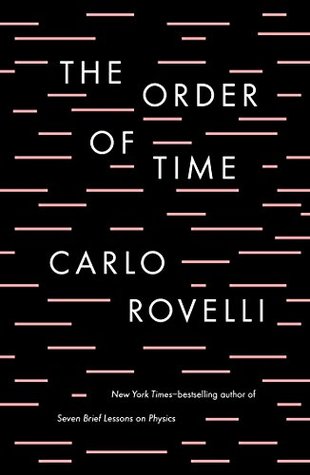More on this book
Community
Kindle Notes & Highlights
The “quantization” of time implies that almost all values of time t do not exist. If we could measure the duration of an interval with the most precise clock imaginable, we should find that the time measured takes only certain discrete, special values. It is not possible to think of duration as continuous. We must think of it as discontinuous: not as something that flows uniformly but as something that in a certain sense jumps, kangaroo-like, from one value to another.
We can think of the world as made up of things. Of substances. Of entities. Of something that is. Or we can think of it as made up of events. Of happenings. Of processes. Of something that occurs. Something that does not last, and that undergoes continual transformation, that is not permanent in time. The destruction of the notion of time in fundamental physics is the crumbling of the first of these two perspectives, not of the second. It is the realization of the ubiquity of impermanence, not of stasis in a motionless time.
The physics and astronomy that will work, from Ptolemy to Galileo, from Newton to Schrödinger, will be mathematical descriptions of precisely how things change, not of how they are.
Nature, for its part, is what it is—and we discover it very gradually. If our grammar and our intuition do not readily adapt to what we discover, well, too bad: we must seek to adapt them.
When an interaction renders the position of a molecule concrete, the state of the molecule is altered. The same applies for its speed. If what materializes first is the speed and then the position, the state of the molecule changes in a different way than if the order of the two events were reversed. The order matters.
What makes the world go round are not sources of energy but sources of low entropy. Without low entropy, energy would dilute into uniform heat and the world would go to sleep in a state of thermal equilibrium—there would no longer be any distinction between past and future, and nothing would happen.
A pile of wood is in an unstable state, like a pack of cards, but until something comes along to make it do so, it does not collapse. This something might, for instance, be a match to light a flame. The flame is a process that opens a channel through which the wood can pass into a state of higher entropy.
Even the most banal phenomena are governed by the second law of thermodynamics. A stone falls to the ground. Why? One often reads that it’s because the stone places itself “in a state of lower energy” that it ends up lower down. But why does the stone put itself into a state of lower energy? Why should it lose energy if energy is conserved? The answer is that when the stone hits the Earth, it warms it: its mechanical energy is transformed into heat. And there is no way back from there. If the second law of thermodynamics did not exist, if heat did not exist, if there existed no microscopic
...more
I believe that our notion of self stems from this, not from introspection. When we think of ourselves as persons, I believe we are applying to ourselves the mental circuits that we have developed to engage with our companions.
Basically, I believe that the fear of death is the result of an accidental and clumsy interference between two distinct evolutionary pressures—the product of bad automatic connections in our brain rather than something that has any use or meaning.


